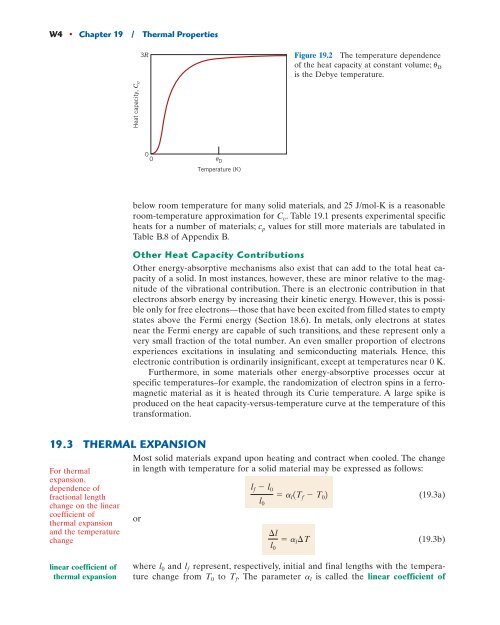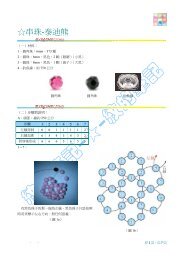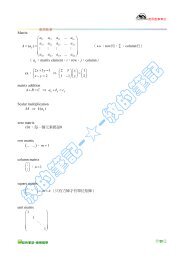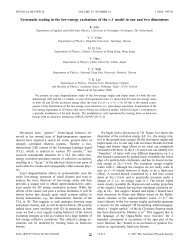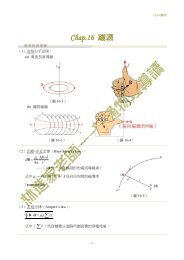Chapter 19 Thermal Properties
Chapter 19 Thermal Properties
Chapter 19 Thermal Properties
Create successful ePaper yourself
Turn your PDF publications into a flip-book with our unique Google optimized e-Paper software.
W4 • <strong>Chapter</strong> <strong>19</strong> / <strong>Thermal</strong> <strong>Properties</strong><br />
below room temperature for many solid materials, and 25 J/mol-K is a reasonable<br />
room-temperature approximation for Cv. Table <strong>19</strong>.1 presents experimental specific<br />
heats for a number of materials; cp values for still more materials are tabulated in<br />
Table B.8 of Appendix B.<br />
Other Heat Capacity Contributions<br />
Other energy-absorptive mechanisms also exist that can add to the total heat capacity<br />
of a solid. In most instances, however, these are minor relative to the magnitude<br />
of the vibrational contribution. There is an electronic contribution in that<br />
electrons absorb energy by increasing their kinetic energy. However, this is possible<br />
only for free electrons—those that have been excited from filled states to empty<br />
states above the Fermi energy (Section 18.6). In metals, only electrons at states<br />
near the Fermi energy are capable of such transitions, and these represent only a<br />
very small fraction of the total number. An even smaller proportion of electrons<br />
experiences excitations in insulating and semiconducting materials. Hence, this<br />
electronic contribution is ordinarily insignificant, except at temperatures near 0 K.<br />
Furthermore, in some materials other energy-absorptive processes occur at<br />
specific temperatures–for example, the randomization of electron spins in a ferromagnetic<br />
material as it is heated through its Curie temperature. A large spike is<br />
produced on the heat capacity-versus-temperature curve at the temperature of this<br />
transformation.<br />
<strong>19</strong>.3 THERMAL EXPANSION<br />
Most solid materials expand upon heating and contract when cooled. The change<br />
For thermal<br />
expansion,<br />
dependence of<br />
fractional length<br />
change on the linear<br />
coefficient of<br />
thermal expansion<br />
and the temperature<br />
change<br />
linear coefficient of<br />
thermal expansion<br />
Heat capacity, C v<br />
in length with temperature for a solid material may be expressed as follows:<br />
or<br />
3R Figure <strong>19</strong>.2 The temperature dependence<br />
of the heat capacity at constant volume; uD is the Debye temperature.<br />
0<br />
0 D Temperature (K)<br />
l 0<br />
l f<br />
(<strong>19</strong>.3a)<br />
(<strong>19</strong>.3b)<br />
where and represent, respectively, initial and final lengths with the temperature<br />
change from to Tf. The parameter is called the linear coefficient of<br />
T 0<br />
lf l0 al 1Tf T02 l 0<br />
¢l<br />
l 0<br />
a l¢T<br />
a l


